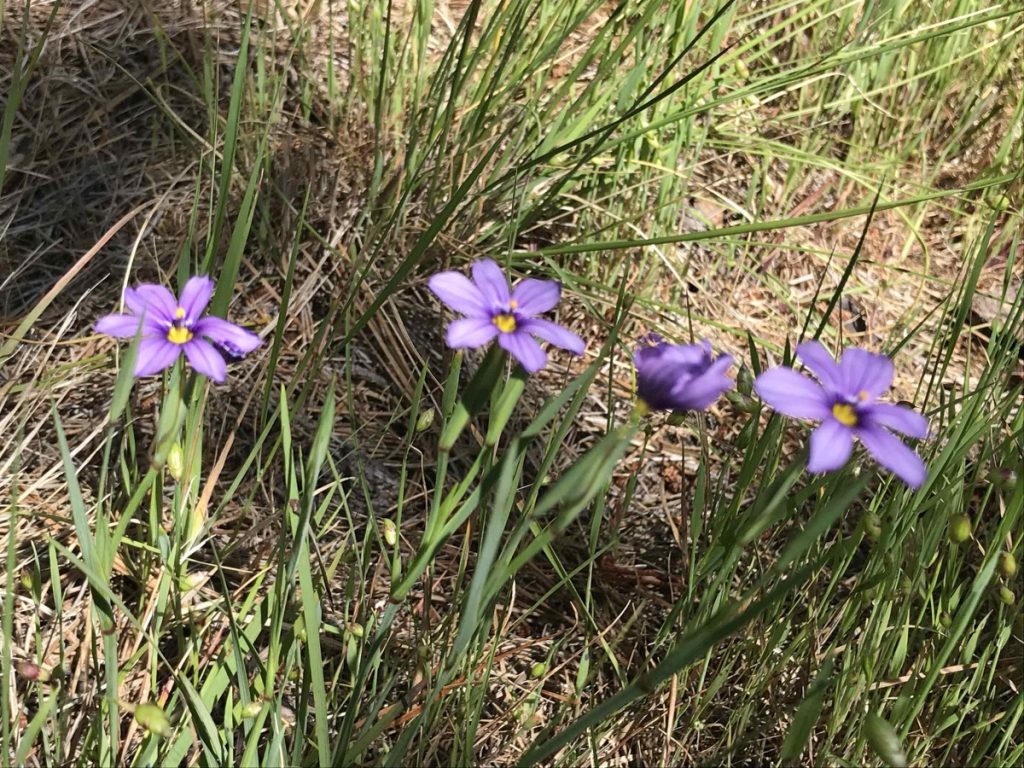
The Iridaceae, the iris family, contains these characteristics:
- Flowers: Typically characterized by having six tepals (petals and sepals that look alike) arranged in two whorls of three. The flowers are often showy and have a unique structure that attracts pollinators. All but one genera (Isophysis) have inferior ovaries.
- Leaves: Usually long, narrow, and sword-shaped. They may be basal or alternate along the stem.
- Inflorescence: The flowers are often clustered in spikes or umbels, sometimes solitary.
- Root System: Many have rhizomes or corms.
- Diversity: The family is highly diverse, containing numerous genera and species distributed across the globe, especially in temperate and subtropical regions. Some well-known genera include Iris, Crocus, Gladiolus, and Sisyrinchium.
- Habitat: Found in a variety of habitats, including grasslands, woodlands, and wetlands, from dry, arid environments to moist, marshy areas.
- Cultural Importance: Many species are cultivated for their ornamental value. Crocus species are cultivated for saffron, a valuable spice derived from the stigmas of Crocus sativus flowers.
- Chemical Composition: Some contain compounds with pharmaceutical properties. For example, compounds found in saffron have been studied for their potential antioxidant, anticancer, and antidepressant effects.
- Pollination: Flowers are pollinated by a variety of insects, birds, and sometimes even mammals. Some have specialized structures, colors, and fragrances to attract specific pollinators.
- Reproductive Strategy: Members of the Iridaceae family reproduce both sexually, through seeds, and asexually, through vegetative propagation via rhizomes or corms. This reproductive versatility contributes to their ability to colonize diverse habitats and environments.
Link to Jepson video
Jepson key to Iridaceae